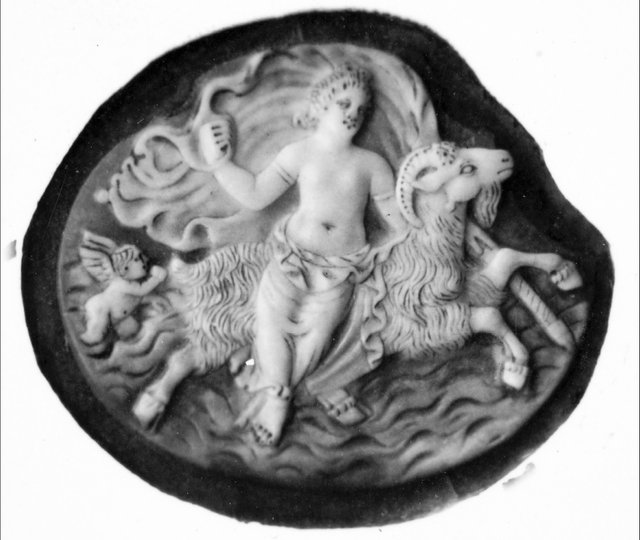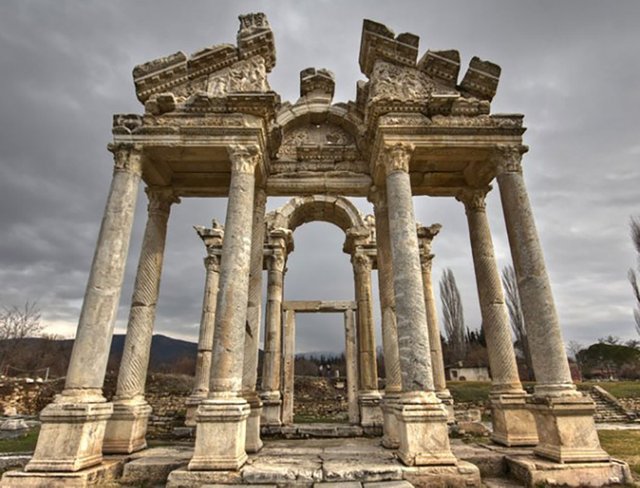The ancient city of Aphrodite, the goddess of love - Aphrodisias #3
This area was only allowed to be entered by priests, who according to a story were exclusively male. The temple was a refuge for seekers and place of pilgrimage. With the Christianization of the city, the temple was rebuilt into a church. For this reason, there were also representations of Jesus and Mary. The church was built until the 11th century. used after Chr., then destroyed by an earthquake. The building adjoins the famous Sculptor School. The marble for their works was sourced from the marble quarries near the city. This high-quality marble was an export good, which was important for the economic life in Aphrodisias.
The sculptors of Aphrodisias were also experts in architectural ornaments, such as pillars with acanthus tendrils, animated by putti and animals, dazzling capitals and busts in Tondi or reliefs with mythological scenes. It is not surprising, therefore, that the Aphrodisias sculpture workshops exported finished or semi-finished products and even artists who worked in Rome and elsewhere in the Mediterranean, e.g. in North Africa, where they were perhaps involved in decorating the forum of Septimius Severus in Lepcis Magna (now Libya). More than 30 sculptures with the appellation of origin "Aphrodisieus" (= of Aphrodisias) are preserved in various places of the Roman Empire, and many new and well-known artist names have been found in the excavations since 1961.
Most ancient sources include Aphrodisias among the cities of Kariens, i. an area in southwestern Turkey today. The city is also near the borders of ancient Lydia in the northwest and Phrygia in the northeast. The late grammarian Stephen of Byzantium (6th century AD) lists Aphrodisias as "Ninoe", a name derived from Ninos. Ninos, one of the mythical founders of the Assyrian Babylonian empire and husband of the famous Semiramis, was allegedly the son of Belos (Bei, equated with the Greek god Kronos) and the conqueror of a large part of West Asia, to the Aegean Sea.
The name Ninos was also derived from the Akkadian forms of the name of the Middle Eastern goddess Ishtar-Astarte: Nin, Ninai, Nana or Enana. This goddess was associated with love and war, and it is therefore not impossible that "Aphrodisias" was a Greek translation of Ninoe, which came into use in the Middle Hellenistic period (2nd century BC), as the local deity with Aphrodite (and thus with the Roman Venus) equated and the place became a real city. Until then, Aphrodisias of Apparbar was the site of a sanctuary with a temple and associated buildings and estates maintained by an appropriately numerous rural population. The adoption of a new name might have favored both the growing prestige of the goddess and Roman infusion in West Asia Minor.
As I said, Aphrodite was equated with the Roman Venus, from which the Romans, via their son Aeneas, derived their origin. Aeneas itself was Trojan, i. he came from northwestern Anatolia. On his hike to the west he came to Italy, and his descendants founded Rome. In short, the equation of the two goddesses could - not uncommonly at that time - be conceived as a skilful political move that took place in the first century BCE. Became useful.


wow! picture is so amazing